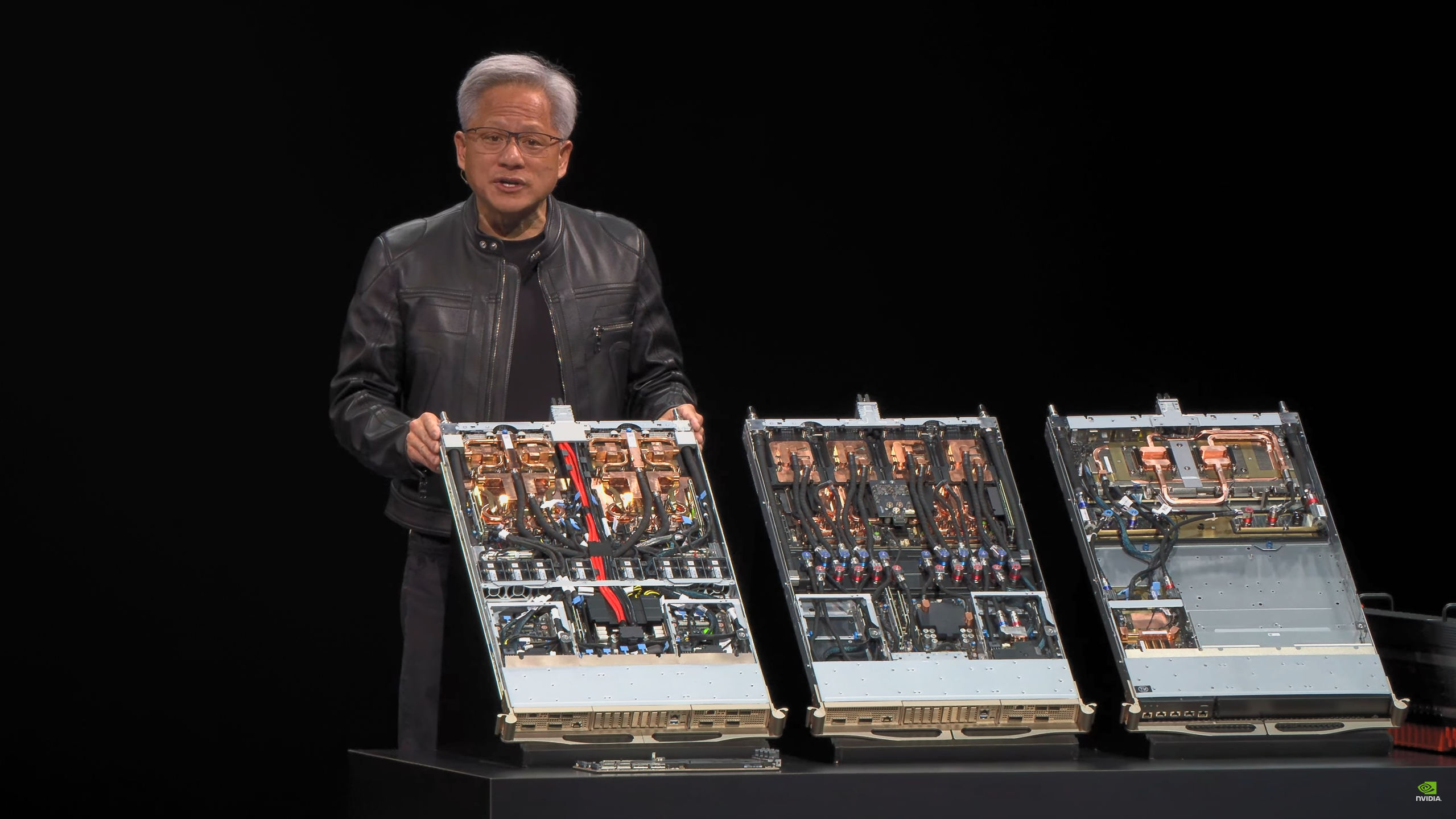'Rising ASIC coalition' seeks to jettison Nvidia — Industry report claims firms are accelerating development in order to reduce dependence on the giant
TSMC, as always, seems to be the true winner in this story

Top hyperscalers and Nvidia clients have begun a prolonged divorce from the AI giant. According to industry reports, purchases of ASICs (application-specific integrated circuits) are projected to rise at a compound annual growth rate of 50%, with much of this growth coming from companies like Microsoft, Google, and Amazon's AWS, all seeking to start work on in-house ASIC development.
ASICs are one of the largest competition vectors to Nvidia's robust hardware and software stack for enterprise computing in the AI era. Nvidia's server hardware is prolific across the industry, with its Blackwell GPUs like the B200 quickly filling data centers worldwide. But with Nvidia's chips costing $70,000 to $80,000 each, and with full-server configs of the GB200 running between $1.8 million and $3 million, it is certainly no surprise that enterprise-scale clients are looking to reduce dependency on such a pricey partner.
Per reports, these top cloud partners of Nvidia are continuing to order hardware from Nvidia. The companies are also ramping up orders of ASIC hardware and reserving production space at TSMC, the world's largest contract chip fabricator. It will be a long-term goal to fully divorce from Nvidia, a company that holds not only hardware dominance but software as well, thanks to its insular CUDA workflow. But the major clients are seemingly beginning the path to hardware independence through in-house ASIC designs, while continuing to buy from Nvidia for the time being.
While a reliable option in the past would be to buy or design ASICs from top ASIC makers like MediaTek or Qualcomm, these companies are now also joining forces with Nvidia. Thanks to Nvidia's NVLink Fusion initiative, a plan to allow customers and ASIC partners to use the company’s NVLink technology in their own products, thus enabling seamless overlap between Nvidia hardware and third-party ASIC-based servers, Nvidia has built new partnerships with much of the ASIC market. MediaTek, Marvell, Alchip, Astera Labs, Synopsys, Cadence, Fujitsu, and Qualcomm have all entered into partnerships with Nvidia via NVLink Fusion.
TSMC, as the company responsible for fabricating both Nvidia's hardware and new ASIC designs from the top hyperscalers, only stands to continue winning big amidst the protracted divorce. In an iconic recent press statement, TSMC chairman C. C. Wei shared, "It doesn't matter who wins — both Nvidia and the ASIC players are our customers. They're all manufactured at TSMC."
This move toward custom ASIC-based server solutions for server graphics and AI compute follows a trend among major hyperscalers like Amazon and Google towards custom, in-house silicon. Many of the top server rental companies have invested big into custom Arm-based chips in their server stacks; 50% of Amazon's new servers are currently running on its custom AWS Graviton Arm-based processor family. As time goes on and the ASIC-based move away from Nvidia continues, it will be interesting to see how fractured the top-end of compute will become.
Follow Tom's Hardware on Google News to get our up-to-date news, analysis, and reviews in your feeds. Make sure to click the Follow button.
Stay On the Cutting Edge: Get the Tom's Hardware Newsletter
Get Tom's Hardware's best news and in-depth reviews, straight to your inbox.

Dallin Grimm is a contributing writer for Tom's Hardware. He has been building and breaking computers since 2017, serving as the resident youngster at Tom's. From APUs to RGB, Dallin has a handle on all the latest tech news.
-
motocros1 if im reading this right, even if those companies switch to asic, then nvidia is still in a position to at least some profit. i don't like nvidia, but they do seem to make all the right moves from a purely business perspective.Reply -
flowingbass It's high time the world stopped tolerating nvidia's price gouging. Jensen thinks this world has unlimited resources and nvidia is an and all be all. Can't wait to see nvidia get intel'd.Reply -
ekio He thought he could charge mafia level prices forever without having clients looking for alternatives?Reply
That is a study case of total monopoly abuse. Nvidia went too far. -
bit_user Reply
NVLink Fusion is not about replacing lost chip sales with IP licensing, as I'm sure the license costs for NVLink are pocket change, compared with what they're making on each server GPU they sell. Instead, I think they see the writing on the wall - that the industry is evolving its own open standards to counter NVLink, such as UALink:motocros1 said:if im reading this right, even if those companies switch to asic, then nvidia is still in a position to at least some profit. i don't like nvidia, but they do seem to make all the right moves from a purely business perspective.
https://promohunters.info/tech-industry/ualink-has-nvidias-nvlink-in-the-crosshairs-final-specs-support-up-to-1-024-gpus-with-200-gt-s-bandwidth%3Cbr%3E Since Nvidia has no interest in adopting UALink, that standard represents a threat, since datacenters embracing UALink-based products might begin to frown on using anything which doesn't support it. Hence, the best option is to enlarge the NVLink ecosystem, by letting 3rd parties integrate it, so that Nvidia can continue to dominate the datacenter/AI networking niche they've carved out. -
bit_user Reply
Nvidia was too far ahead and it's just taken a long time for the rest of the industry to catch them. It's not for lack of trying.umeng2002_2 said:Why not sooner?
I'd argue that Nvidia played its hand well. It exploited its monopoly position to the maximum extent, knowing that it wouldn't last forever. Their pricing model was further bolstered by natural supply constraints, creating a shortage situation that nobody could blame on them.ekio said:He thought he could charge mafia level prices forever without having clients looking for alternatives?
That is a study case of total monopoly abuse. Nvidia went too far.
Make no mistake: competitors were an inevitability, regardless of how much Nvidia charged.